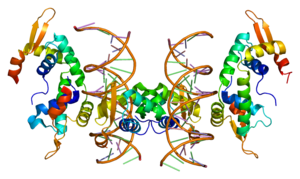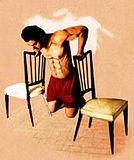The choice of the drive size (full body, half body or split routine)
should be based on your level, your recovery and your ability to do
intense training sessions.
There are three types of training, the training in full body in half body or split routine.
Each of these types of training has its advantages and disadvantages, and none is superior to another, however their characteristics are more or less fit you and your resilience and strength that you can put in each series.
Type training
We
must understand that
muscle growth responds to a stimulus: training.
This stimulus will activate a gene that tells the
body to
build muscle.
Indeed
, raining damages the
muscle, the
body will then rebuild "a little bigger" then before. The logic is
, therefore that it
also causes often as possible to activate this gene, however, if the
body and the
muscles do not have enough time to recover and rebuild
muscle growth will be greatly reduced, or no, this is what happens when
over-
training.
It therefore comes another important factor: the
intensity of the session. By intensity we mean the ability of a
practitioner to push his
muscles to their maximum efforts in a series.
And, a practicing beginner will have little strength due to his lack of
training, an advanced practitioner will meanwhile a much greater ability
to push the effort at its height, thanks to a better development of its
nervous system, better concentration, ...
This intensity will therefore have a direct connection with the recovery time needed to
muscle.
We need to find a good compromise between the intensity and frequency of
training.
So
someone with a good recovery can afford to train more often. But if the
recovery is a problem it will reduce the frequency of training and
focus on intensity. So if you increase the intensity, you must lower the
frequency, and vice versa.
Full-body:
The full-
body is to
train the whole body in one session, 2-3 times per week.
It
is advisable for
beginners muscle because frequent repetition
exercises
allows them nervous and a learning adaptation faster movements.
However, it is not just for beginners, in fact people with good recovery
can afford to train as
often. However,
it comes at the cost of
training intensity, it will be necessary to
avoid go to failure, that is to say at the stage where we can't perform
an additional repetition in a series.
Half Body:

The half
body is in turn lead to the upper and lower
body specifically, usually
2 times
each week. We will be able to put more intensity in full-body, because
different parts of the
body will have a little more time to recover.
People with poor recovery can lead each side of the
body every
5 days, which allows them to keep a good intensity while promoting recovery.
Split routine:
Finally,
the split routine puts priority on the intensity and not on the
frequency of
training, it is a single train each
muscle once a week, so
we will be able to go to failure and use techniques intensification.
However, you need a good level to use these methods effectively
increased.
By compensating the reductionof the frequency of the
training intensity
can make gains as high as the other methods.
People
with poor recovery must avoid full-
body and prefer the split routine,
but if you do not like the split or are unable to put a lot of intensity
in a session it is best to opt for the body half or full-
body.
-->






































